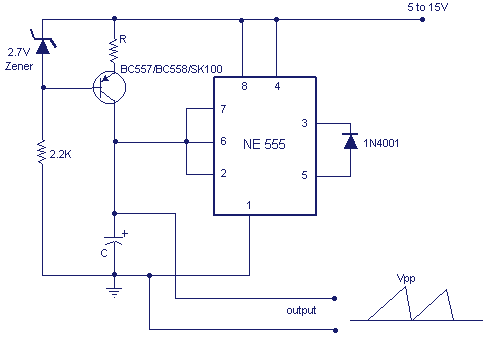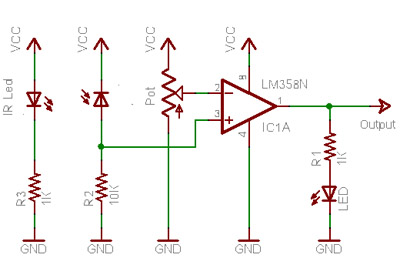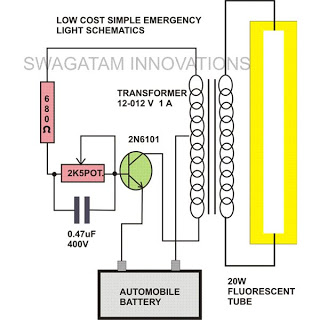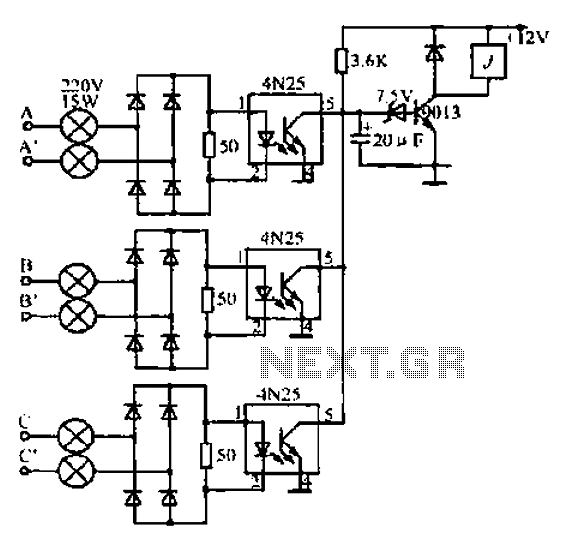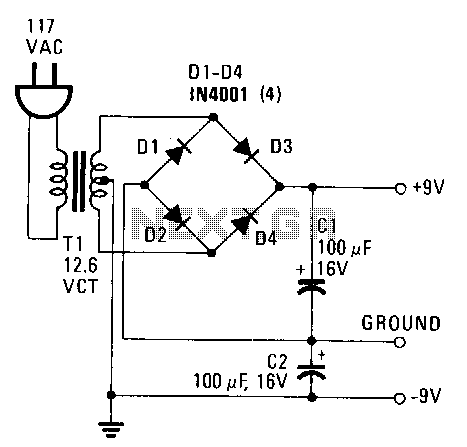
Simple VHF FM radio
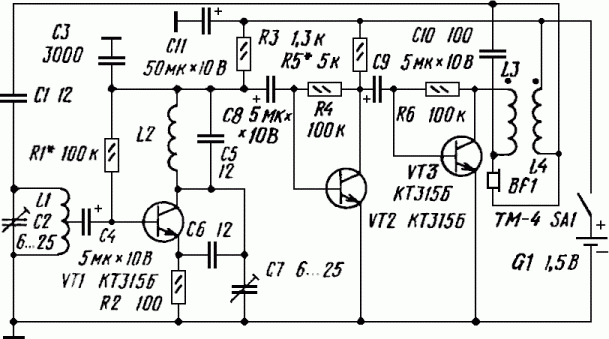
The RF stage of the receiver utilizes a transistor VT1, functioning as both a mixer and a local oscillator while also serving as a synchronous detector. A headphone cable acts as an antenna, capturing signals that are directed to the input resonant tank circuit L1C2, which is tuned to a center frequency of 70 MHz within the VHF band (ranging from 65.8 to 74.0 MHz, the first FM band in Russia). The RF signal is extracted from a tap on coil L1 and fed to the base of transistor VT1. This transistor is configured as a common-base circuit for local oscillator operation and as a common-emitter circuit for frequency conversion. The local oscillator operates within the frequency range of 32.9 to 36.5 MHz, with its second harmonic falling within the VHF band of 65.8 to 73 MHz. The resonant tank L2C5 operates at a frequency that is half that of the input resonant tank L1C2, facilitating conversion at the second harmonic of the local oscillator frequency, resulting in an audio frequency output. The same transistor VT1 amplifies the audio frequency, configured as a common-base circuit for audio signals (with the base shunted by capacitor C4). The audio amplifier comprises two stages (VT2, VT3), with VT2 serving as a preamplifier and VT3 as a power amplifier. The final stage's load is headphones BF1, rated at 50 ohms. When powered by a 1.5-volt battery, the output power is 30 mW with an 8-ohm load, and the circuit consumes less than 10 mA. The circuit can be housed in an appropriate enclosure. Coils L1 and L2 are wound on a former with a 5 mm outer diameter, with coil L1 consisting of 6 turns of 0.56 mm diameter wire (AWG 23) and tapped at the center. Coil L2 comprises 20 turns of the same wire. Coils L3 and L4 consist of 200 turns of 0.06 mm diameter wire (AWG 42) wound on a ferrite slug measuring 2 mm in diameter and 10 mm in length, with a permeability of 400. Transistors KT315B can be substituted with 2N2222. Circuit adjustment begins with the audio amplifier; resistor R6 should be tweaked to achieve a current of approximately 6.9 mA through transistor VT3. Resistor R1 adjusts the operating point of the local oscillator, while capacitor C6 fine-tunes the second harmonic of the local oscillator. The inductance of coil L2 can be adjusted by modifying the coil's physical dimensions to set the frequency band limits. Capacitor C2 is used to tune resonant tank L1C2 to the center of the VHF FM band. Capacitor C7 is also utilized for tuning.
The RF stage is critical for the receiver's performance, and the design leverages the unique properties of transistors and resonant circuits to achieve effective signal processing. The configuration of transistor VT1 as both a common-base and common-emitter circuit is particularly advantageous, as it allows for simultaneous mixing and amplification of the RF signal. The use of a headphone cable as an antenna is a practical solution for compact designs, enabling the reception of VHF signals without the need for bulky antennae.
The audio amplification stages, consisting of transistors VT2 and VT3, are designed to provide sufficient power to drive headphones while maintaining low current consumption, which is essential for battery-operated devices. The careful selection of component values, particularly in the resonant tank circuits and the audio amplifier, ensures that the receiver operates efficiently within the desired frequency ranges.
The adjustment procedures outlined are crucial for optimizing the performance of the receiver. By fine-tuning resistor and capacitor values, the user can achieve the desired operating characteristics, ensuring that the receiver can effectively process FM signals within the specified band. The design's flexibility in component selection, such as the option to replace KT315B transistors with 2N2222, adds to the practicality and accessibility of the circuit for various applications. Overall, this receiver design exemplifies a well-thought-out approach to RF signal processing, combining both functionality and ease of use.The RF stage of the receiver is based on a transistor VT1, this stage works as a mixer and a local oscillator and it works as a synchronous detector. A cable of the headphones works as an antenna. A signal received with this antenna is fed to the input resonant tank circuit L1C2 which is tuned to a center frequency 70 MHz of the VHF band (65.
8. 74. 0 MHz - it`s the first FM band in Russia). From a tap of the coil L1 the RF signal goes to the base of the transistor VT1. The transistor VT1 is configured as a common-base circuit to work as the local oscillator, and in the same time the transistor VT1 is configured as a common-emitter circuit to work as a frequency converter. The local oscillator works in the frequency range of 32. 9. 36. 5 MHz, so the frequency of its second harmonic is within the range of the VHF band 65. 8. 73 MHz. The frequency of the resonant tank L2C5 is two times lower than the frequency of the input resonant tank L1C2, so the conversion occurs at the second harmonic of the local oscillator frequency, and because of this the resulting frequency will be in audio frequency range.
The amplification of the audio frequency provides with the same transistor VT1 which is configured for the audio signals as a common-base circuit (the base is shunted by a capacitor C4). The audio amplifier of the receiver has two stages (VT2, VT3). A preamplifier stage is composed of the transistor VT2, a power amplifier is based on the transistor VT3.
The load of the last stage is the headphones BF1 with resistance of 50 ohms. If the circuit is powered with a 1. 5 volts battery, then the output power is 30 mW at the load of 8 ohms. The current consumption of the circuit is less than 10 mA. The circuit can be mounted in any suitable housing. Coils L1, L2 are wound on a former with a 5 mm outside diameter. The coil L1 has 6 turns of wire of diameter 0. 56 mm (AWG 23), the coil is tapped at the center point. The coil L2 has 20 turns of wire of diameter 0. 56 mm (AWG 23). Coils L3, L3 has 200 turns of wire of diameter 0. 06 mm (AWG 42), they are wound on a ferrite slug of diameter 2 mm, 10 mm long and a permeability of 400. Transistors KT315B can be replaced with 2N2222. The adjustment of the circuit starts with the audio amplifier. Tweak the resistor R6 value to get the current of the transistor VT3 around 6. 9 mA. Tweak the resistor R1 to adjust the operation point of the local oscillator. Tweak the capacitor C6 to adjust the level of the second harmonic of the local oscillator. Adjust the inductance of the coil L2 (by stretching and squeezing the coil) to set up the boundaries of the frequency band.
Adjust capacitor C2 to tune the resonant tank L1C2 to the middle of the VHF FM band. The capacitor C7 is used for tuning. 🔗 External reference
The RF stage is critical for the receiver's performance, and the design leverages the unique properties of transistors and resonant circuits to achieve effective signal processing. The configuration of transistor VT1 as both a common-base and common-emitter circuit is particularly advantageous, as it allows for simultaneous mixing and amplification of the RF signal. The use of a headphone cable as an antenna is a practical solution for compact designs, enabling the reception of VHF signals without the need for bulky antennae.
The audio amplification stages, consisting of transistors VT2 and VT3, are designed to provide sufficient power to drive headphones while maintaining low current consumption, which is essential for battery-operated devices. The careful selection of component values, particularly in the resonant tank circuits and the audio amplifier, ensures that the receiver operates efficiently within the desired frequency ranges.
The adjustment procedures outlined are crucial for optimizing the performance of the receiver. By fine-tuning resistor and capacitor values, the user can achieve the desired operating characteristics, ensuring that the receiver can effectively process FM signals within the specified band. The design's flexibility in component selection, such as the option to replace KT315B transistors with 2N2222, adds to the practicality and accessibility of the circuit for various applications. Overall, this receiver design exemplifies a well-thought-out approach to RF signal processing, combining both functionality and ease of use.The RF stage of the receiver is based on a transistor VT1, this stage works as a mixer and a local oscillator and it works as a synchronous detector. A cable of the headphones works as an antenna. A signal received with this antenna is fed to the input resonant tank circuit L1C2 which is tuned to a center frequency 70 MHz of the VHF band (65.
8. 74. 0 MHz - it`s the first FM band in Russia). From a tap of the coil L1 the RF signal goes to the base of the transistor VT1. The transistor VT1 is configured as a common-base circuit to work as the local oscillator, and in the same time the transistor VT1 is configured as a common-emitter circuit to work as a frequency converter. The local oscillator works in the frequency range of 32. 9. 36. 5 MHz, so the frequency of its second harmonic is within the range of the VHF band 65. 8. 73 MHz. The frequency of the resonant tank L2C5 is two times lower than the frequency of the input resonant tank L1C2, so the conversion occurs at the second harmonic of the local oscillator frequency, and because of this the resulting frequency will be in audio frequency range.
The amplification of the audio frequency provides with the same transistor VT1 which is configured for the audio signals as a common-base circuit (the base is shunted by a capacitor C4). The audio amplifier of the receiver has two stages (VT2, VT3). A preamplifier stage is composed of the transistor VT2, a power amplifier is based on the transistor VT3.
The load of the last stage is the headphones BF1 with resistance of 50 ohms. If the circuit is powered with a 1. 5 volts battery, then the output power is 30 mW at the load of 8 ohms. The current consumption of the circuit is less than 10 mA. The circuit can be mounted in any suitable housing. Coils L1, L2 are wound on a former with a 5 mm outside diameter. The coil L1 has 6 turns of wire of diameter 0. 56 mm (AWG 23), the coil is tapped at the center point. The coil L2 has 20 turns of wire of diameter 0. 56 mm (AWG 23). Coils L3, L3 has 200 turns of wire of diameter 0. 06 mm (AWG 42), they are wound on a ferrite slug of diameter 2 mm, 10 mm long and a permeability of 400. Transistors KT315B can be replaced with 2N2222. The adjustment of the circuit starts with the audio amplifier. Tweak the resistor R6 value to get the current of the transistor VT3 around 6. 9 mA. Tweak the resistor R1 to adjust the operation point of the local oscillator. Tweak the capacitor C6 to adjust the level of the second harmonic of the local oscillator. Adjust the inductance of the coil L2 (by stretching and squeezing the coil) to set up the boundaries of the frequency band.
Adjust capacitor C2 to tune the resonant tank L1C2 to the middle of the VHF FM band. The capacitor C7 is used for tuning. 🔗 External reference
